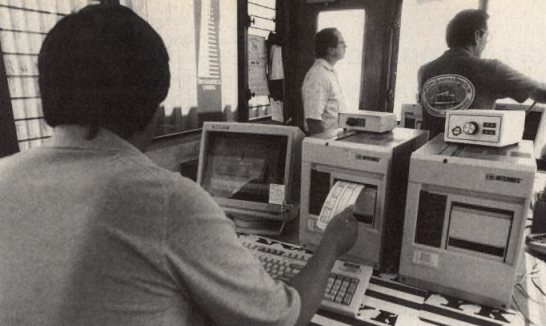Radio-frequency technology was cutting edge at terminals in 1990s

Every week, FreightWaves explores the archives of American Shipper’s nearly 70-year-old collection of shipping and maritime publications to showcase interesting freight stories of long ago.
This article comes from the May 1991 issue of American Shipper and celebrates the launch of what at the time was a cutting-edge technology — radio frequency. The article is a great look at the contrast from today’s ubiquitous use of RFID tech in terminals.
Matson terminal to be automated
Radio-frequency signals are used to keep track of container equipment in a new system that Matson Terminals Inc. has installed at its Sand Island terminal in Honolulu. The $1.2 million project, designed to speed up the handling of data, was developed as part of the Maritime Administration’s Cargo Handling Cooperative Program. With CHCP, MarAd works with selected U.S.-flag carriers to develop new technology that might have general application. The program has existed since 1983.
Matson likes what it has seen of its new Automated Equipment Identification gate processing system at Honolulu, said Christopher Kane, vice president of industrial engineering. The system is based on radio signals between antennas mounted on utility poles scattered around the terminal and electronically coded tags affixed to yard trucks and chassis. The tags have been installed on 1,300 Matson-owned container chassis and 60 motor-generator sets, as well as 550 tractors and 40 dollies owned and operated by tracking companies.
When the equipment enters the Matson gate, information such as weight, dimensions, and ID number can be read electronically by radio-frequency devices and relayed to the terminal’s central computer system. The computer database monitors and records the amount of time the equipment is in the container yard. When the track exits the gate, an electronic record is automatically made.
Matson officials said the new system will virtually eliminate the need to manually key in gate transactions, and that the computerized system will produce all hard-copy receipts of transactions. Kane said, however, that the system won’t displace clerks, who will still perform tasks such as typing in the number of the containers entering and exiting the yard. That task is still necessary because Matson isn’t ready to take on the mammoth job of affixing the electronic tags to all of its 20,000 containers.
Kane said radio-frequency signals have advantages over “optical” bar-code strips. Optical systems, such as those mounted on railcars and read by scanners, can be fouled by dirt and grease. The radio-frequency signals must have a clear line of sight between antenna and tag, but otherwise are relatively trouble-free, Kane said.
Radio-frequency signals are one of several projects developed in the cooperative program between MarAd and U.S.-flag lines. Carriers participating in the program are Matson, American President Lines, Crowley Maritime Corporation, and Sea-Land Service.
The post Radio-frequency technology was cutting edge at terminals in 1990s appeared first on FreightWaves.
